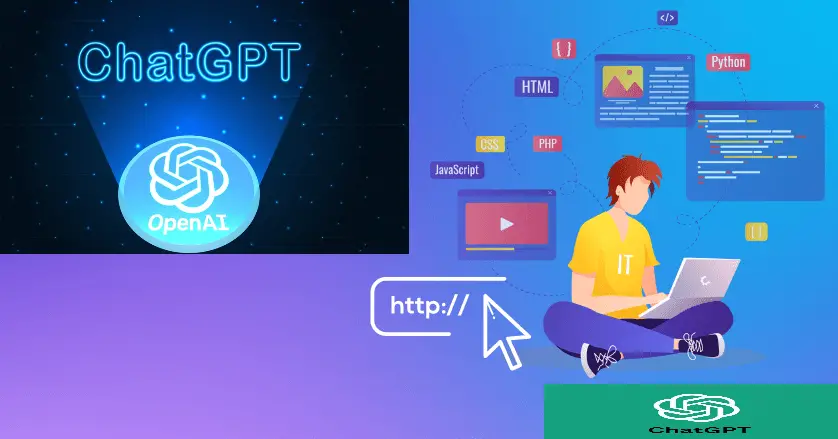
It is very important for web developers to pursue innovation if they wish to remain competitive. This is where ChatGPT comes into play as a crucial AI tool.
So, if you are a web developer wanting to know if I can use ChatGPT for Web Development, the answer is a simple yes! Through inputting well-tailored prompts, you can use ChatGPT for web development inspiration, coding and much more.
In this article, I will share how the cutting-edge capabilities of ChatGPT can be used for web development and how developers all over the world can benefit from AI for both Front End and Back End Web Development.
Yes, You can create a website using ChatGPT by generating HTML, CSS, and JavaScript code that can form the core of a simple static website.
For example, If you are developing the Front End of the website, you will have to craft Detailed ChatGPT Prompts for Front End Development and describe the type of website you want. With just a few precise prompts, developers can get ChatGPT to produce starter code, database queries, API schemas, and infrastructure configs more effectively.
ChatGPT will then generate a code for the site layout, styling, and interactive elements. You will then need to copy this code into a text editor, make any necessary tweaks, and use a web hosting platform to actually launch the site.
Front end development involves creating visually appealing and highly interactive user interfaces using HTML, CSS, and JavaScript. It is crucial for delivering engaging user experiences and seamless website functionality. A well-designed front end facilitates intuitive navigation and access to site content, enhancing overall visitor satisfaction.
Here are some ways ChatGPT can be useful for front end web development tasks:
Back end development refers to server-side coding that powers website and application functionality, database integration, and business logic. It is vital for managing data, connecting the front end to databases, implementing site logic, and ensuring security.
The first thing that you need is to create effective ChatGPT Prompts for Back End Development. With the right prompts, developers can get ChatGPT to automatically generate boilerplate code for common frameworks, produce database queries instead of looking up syntax, quickly mock up API endpoints.
Here are some key ways ChatGPT can assist with back end web development:
Keep in mind that providing the right Backend Development Prompts to ChatGPT will completely enhance the generated response. By framing requests properly, developers can get ChatGPT to automatically generate boilerplate code for common frameworks, produce database queries instead of looking up syntax, and quickly mock up API endpoints.
ChatGPT has diverse applications in web development and can assist developers with both front end and back end tasks. While it cannot wholly build a website alone, it can help generate code, explain code logic, debug issues, suggest improvements, and automate repetitive coding. With the right prompts, ChatGPT can be a useful resource for web developers looking to increase productivity and innovation.
We evaluated the performance of Llama 3.1 vs GPT-4 models on over 150 benchmark datasets…
The manufacturing industry is undergoing a significant transformation with the advent of Industrial IoT Solutions.…
If you're reading this, you must have heard the buzz about ChatGPT and its incredible…
How to Use ChatGPT in Cybersecurity If you're a cybersecurity geek, you've probably heard about…
Introduction In the dynamic world of cryptocurrencies, staying informed about the latest market trends is…
The Events Calendar Widgets for Elementor has become easiest solution for managing events on WordPress…